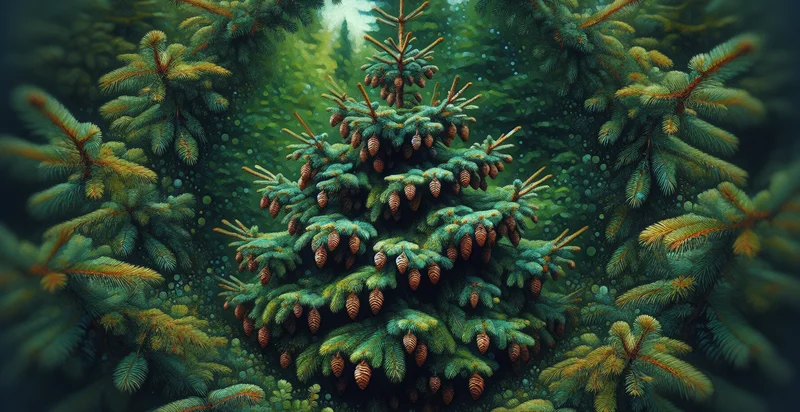Identify spruce tree species
using AI
Below is a free classifier to identify spruce tree species. Just upload your image, and our AI will predict what species of spruce tree it is - in just seconds.

Contact us for API access
Or, use Nyckel to build highly-accurate custom classifiers in just minutes. No PhD required.
Get started
import nyckel
credentials = nyckel.Credentials("YOUR_CLIENT_ID", "YOUR_CLIENT_SECRET")
nyckel.invoke("spruce-tree-species", "your_image_url", credentials)
fetch('https://www.nyckel.com/v1/functions/spruce-tree-species/invoke', {
method: 'POST',
headers: {
'Authorization': 'Bearer ' + 'YOUR_BEARER_TOKEN',
'Content-Type': 'application/json',
},
body: JSON.stringify(
{"data": "your_image_url"}
)
})
.then(response => response.json())
.then(data => console.log(data));
curl -X POST \
-H "Content-Type: application/json" \
-H "Authorization: Bearer YOUR_BEARER_TOKEN" \
-d '{"data": "your_image_url"}' \
https://www.nyckel.com/v1/functions/spruce-tree-species/invoke
How this classifier works
To start, upload your image. Our AI tool will then predict what species of spruce tree it is.
This pretrained image model uses a Nyckel-created dataset and has 10 labels, including Black Spruce, Blue Spruce, Engelmann Spruce, Korean Spruce, Lutz Spruce, Norway Spruce, Red Spruce, Serbian Spruce, Sitka Spruce and White Spruce.
We'll also show a confidence score (the higher the number, the more confident the AI model is around what species of spruce tree it is).
Whether you're just curious or building spruce tree species detection into your application, we hope our classifier proves helpful.
Related Classifiers
Need to identify spruce tree species at scale?
Get API or Zapier access to this classifier for free. It's perfect for:
- Tree Species Monitoring: This function can be employed by environmental researchers to monitor and track spruce tree species in forests. By accurately classifying images, researchers can gain insights into biodiversity, species distribution, and the health of forest ecosystems.
- Forestry Management: Forestry companies can utilize this image classification function to efficiently manage spruce tree resources. By identifying species correctly, they can optimize timber production, enhance sustainability practices, and reduce waste in harvesting operations.
- Urban Planning: Urban planners can leverage the spruce tree species identifier for landscaping and green space design. Understanding which species are prevalent in urban areas can aid in making informed decisions about tree planting, maintenance, and biodiversity promotion.
- Pest and Disease Management: Agricultural and forestry experts can use this function to identify spruce tree species that may be vulnerable to specific pests or diseases. Timely identification allows for targeted interventions and management strategies, protecting valuable forest resources.
- Educational Tools: Educational institutions can incorporate the spruce tree species identifier into biology or environmental science curricula. This tool can assist students in learning about different spruce species, their characteristics, and their roles within ecosystems.
- Ecotourism Marketing: Ecotourism operators can use the tree species identification function to enhance the experience of nature enthusiasts. By providing accurate information on spruce species found in local parks or reserves, they can create informative tours and attract eco-conscious visitors.
- Climate Change Studies: Climate scientists can employ this function to study the impacts of climate change on spruce tree populations in different regions. By classifying images over time, they can analyze shifts in species distribution, health, and growth patterns in response to changing environmental conditions.


